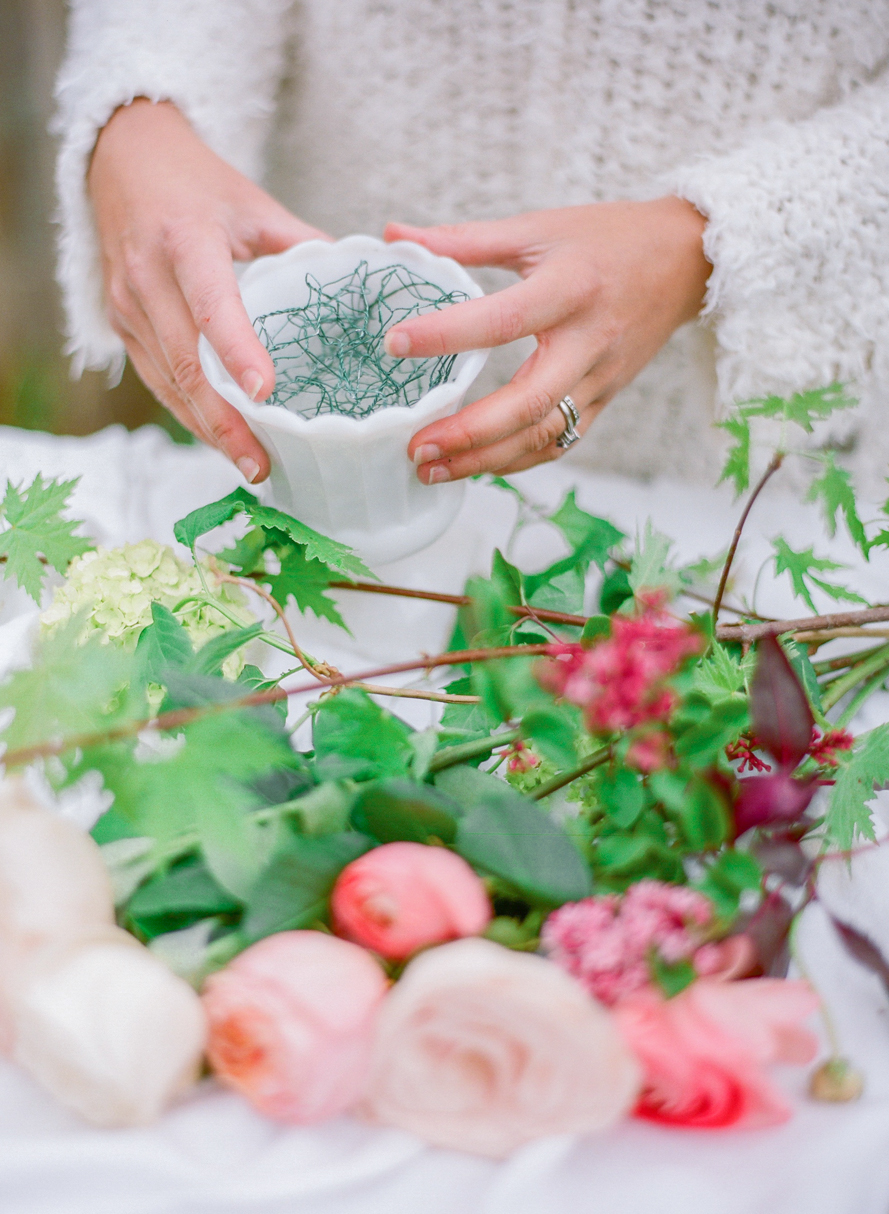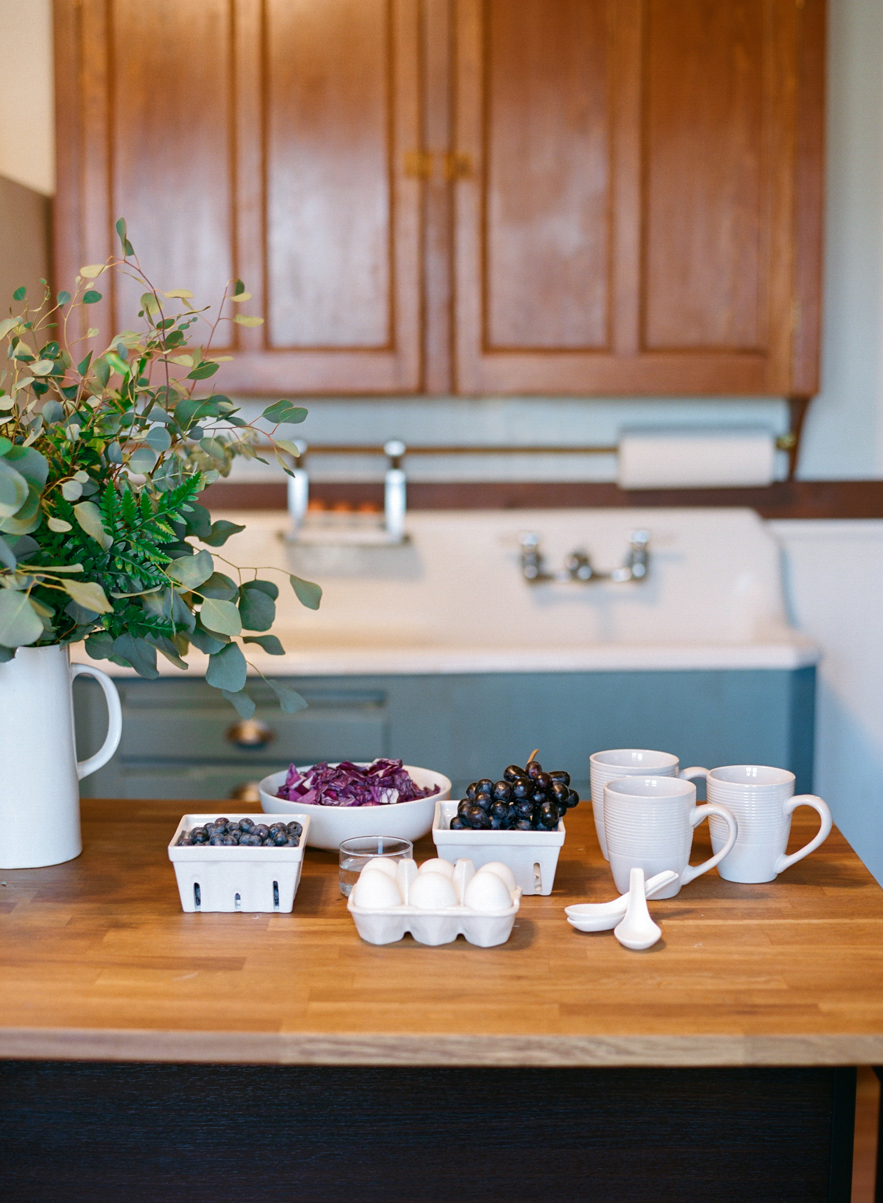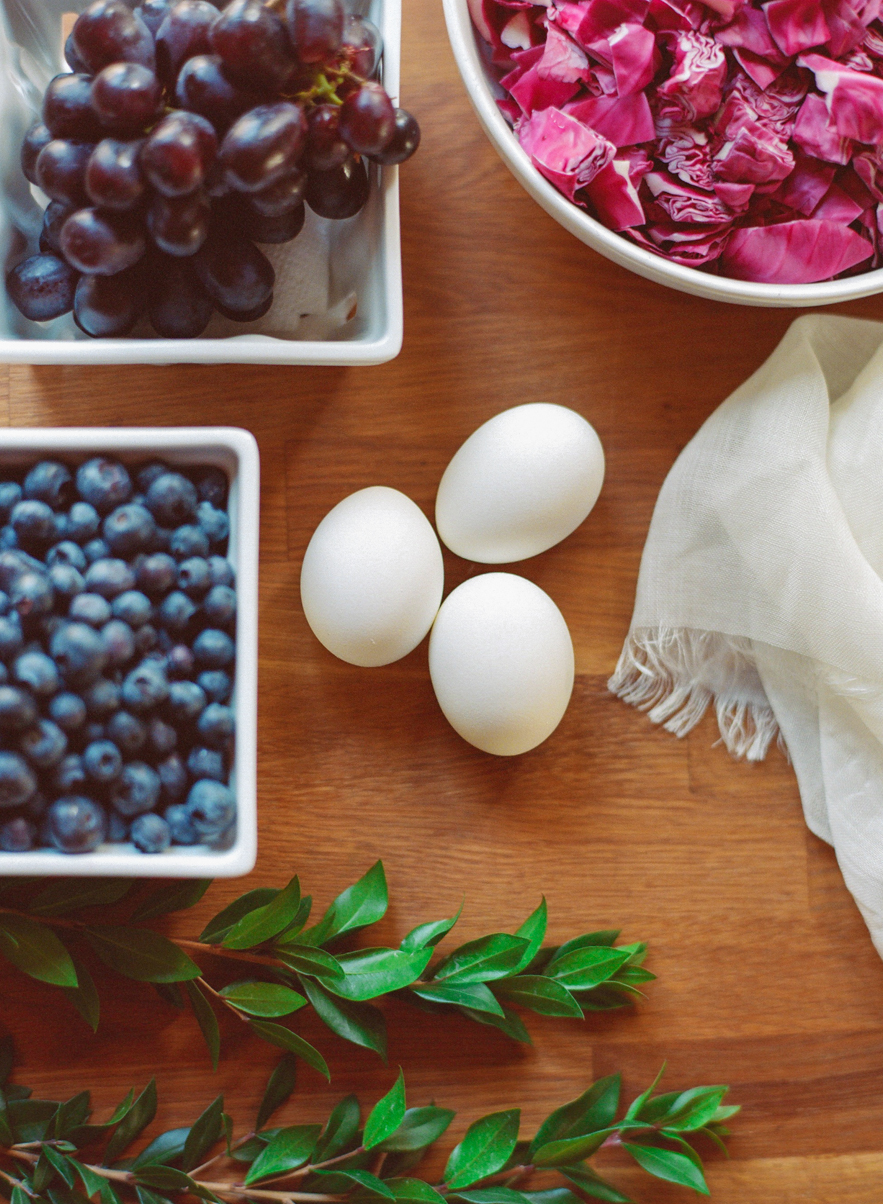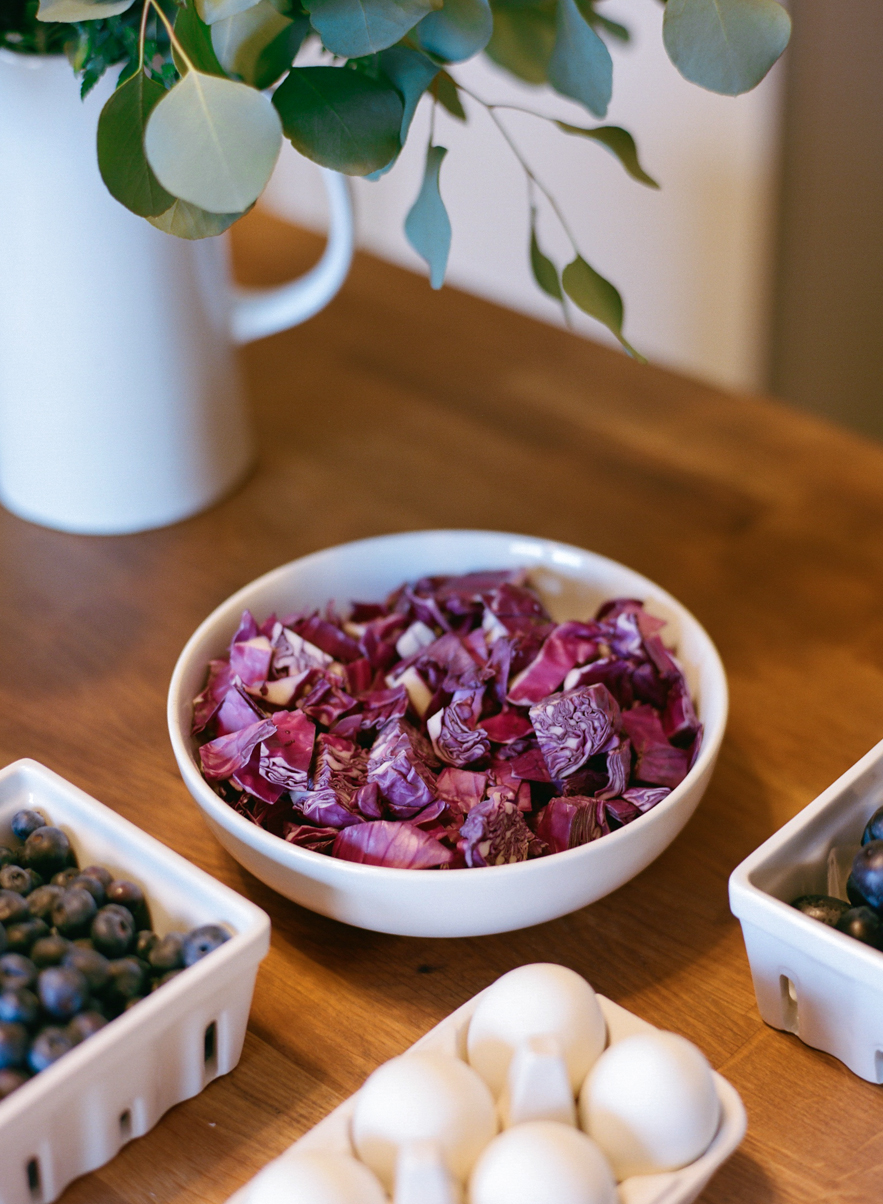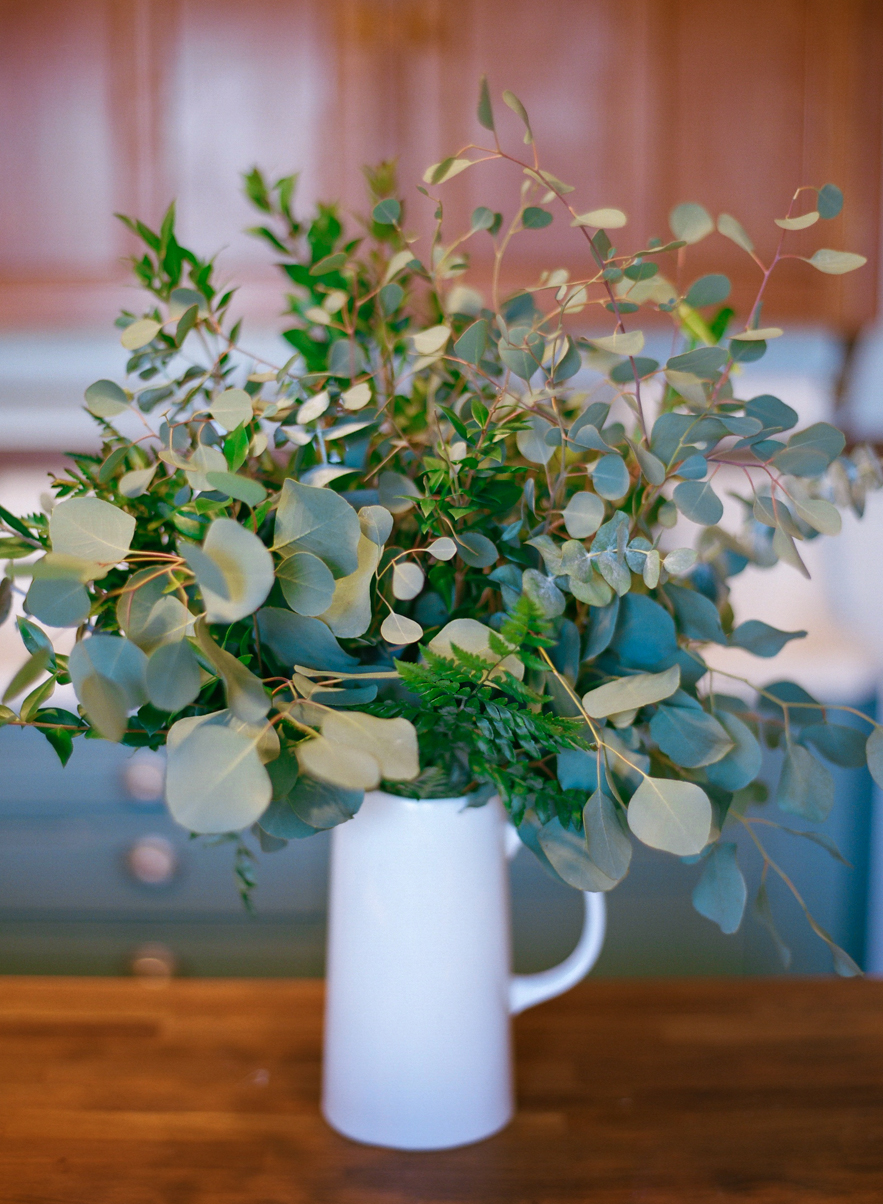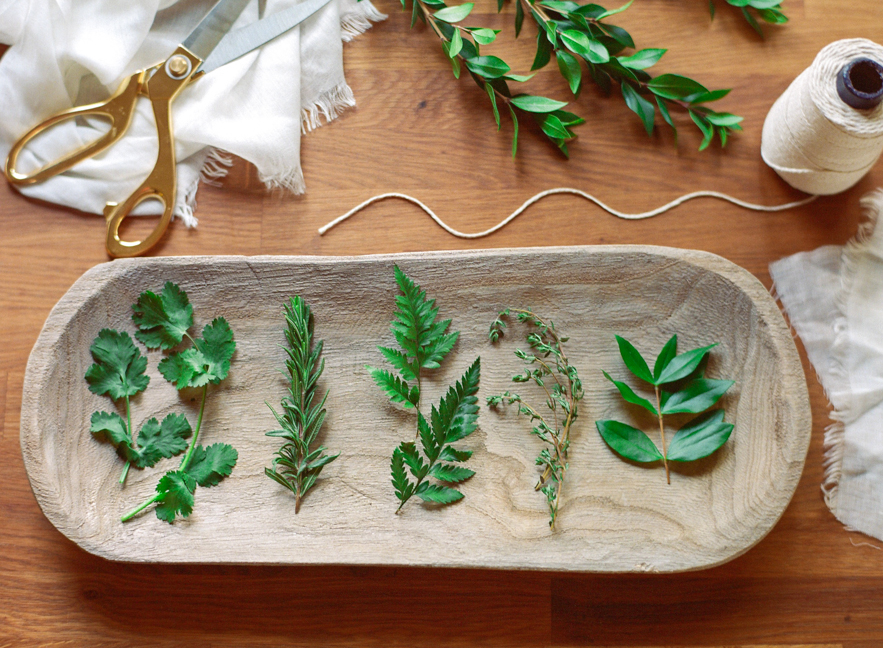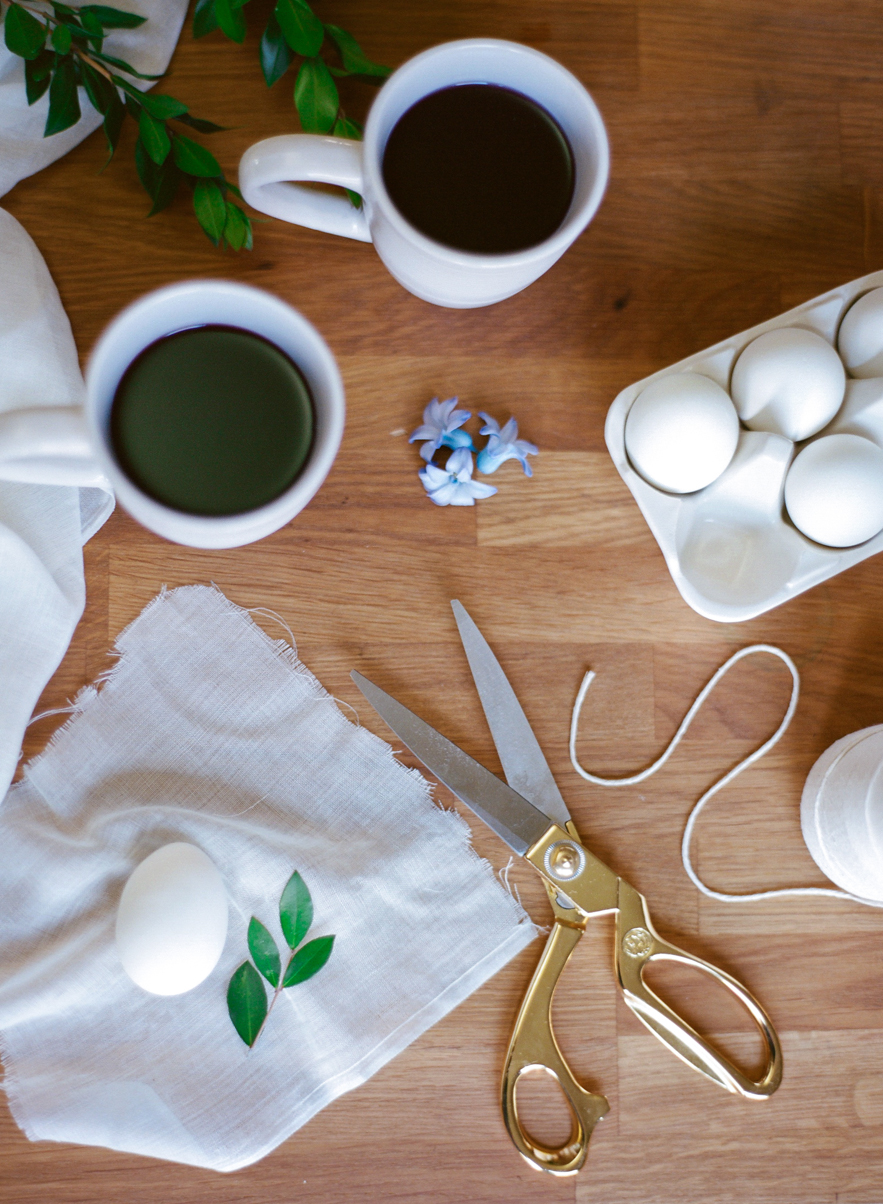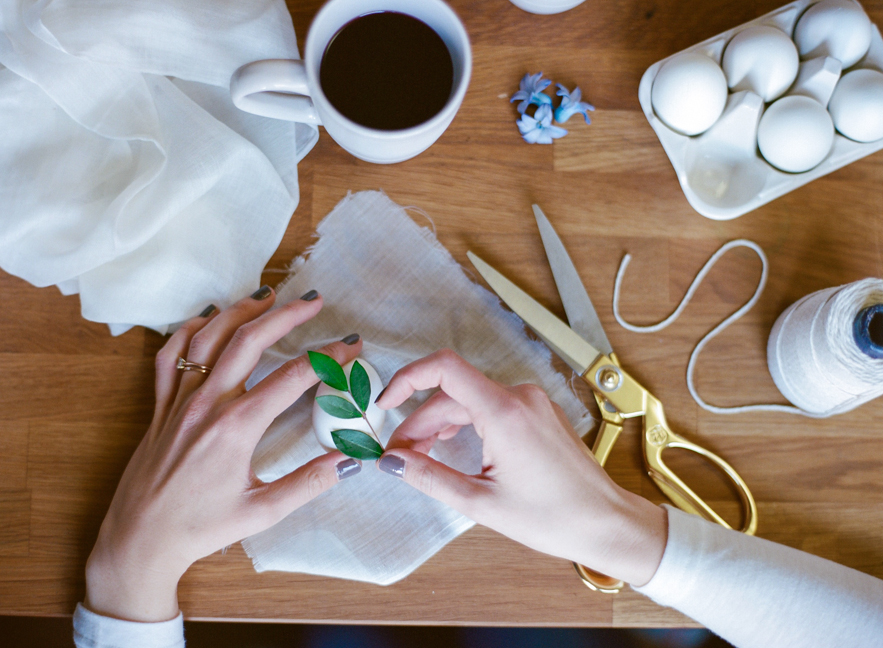DIY Mother’s Day Garden Florals
The other day, I spent the afternoon with a good friend chatting over lunch in her kitchen and brainstorming on ideas for Mother’s Day gifts. Only minutes later, she was clipping flowers from her garden and I was loading film after we’d come up with a beautiful way to gift her mother something unique, inexpensive, and entirely sentimental. Using a few heirlooms Robyn’s mother had given her over the years (a beautiful hobnail milk glass candy dish, a sweet floral sugar bowl, and a darling little silver teapot), we found ourselves foraging her garden for greenery and flowers to fill these family treasures with. Below, Robyn explains the process. And let me just say, I’m still jealous that all this came out of her garden!
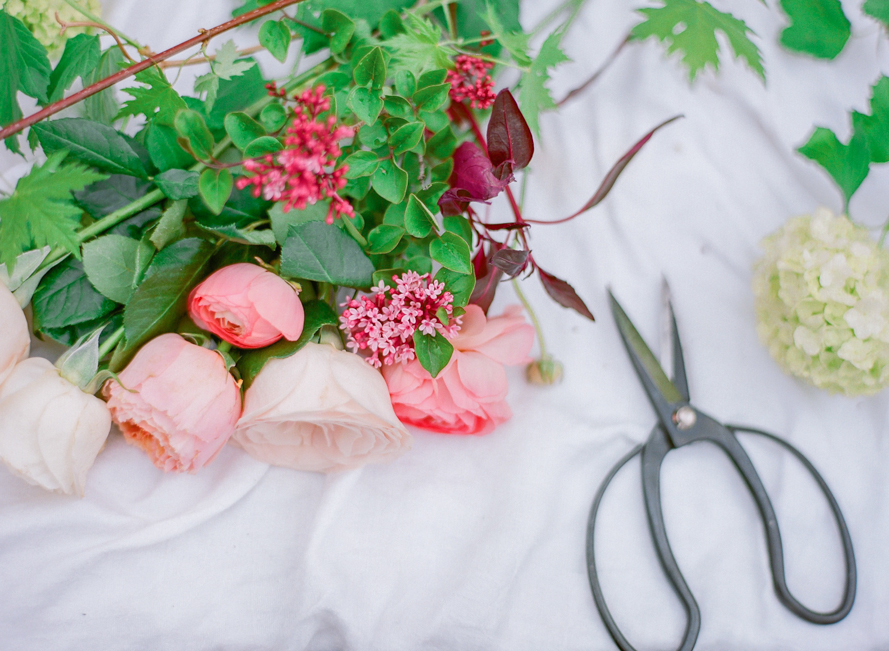
* A pretty little opaque vase to showcase your blooms (or anything else your mother may have given you that could act as a vase.)
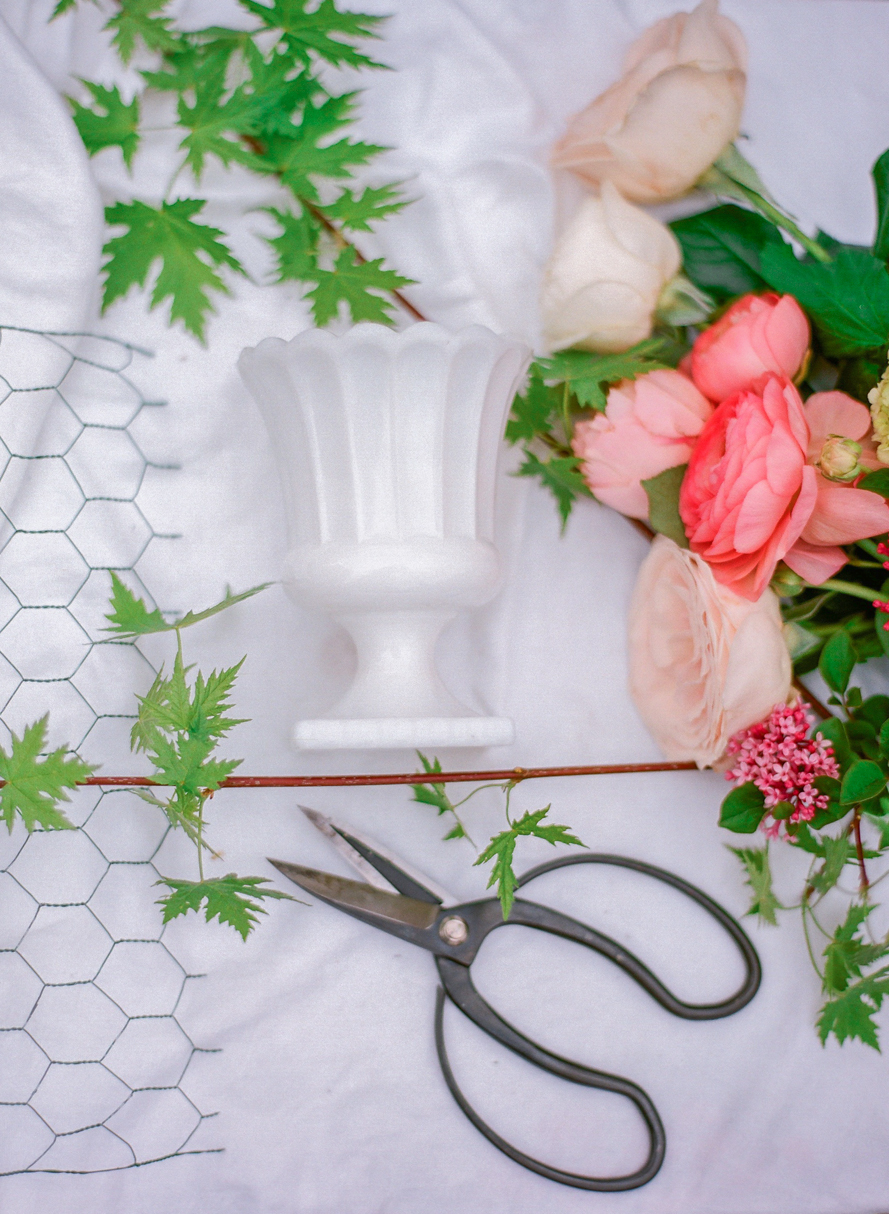
Step 1:
The first step to any gorgeous floral arrangement is to prepare your flowers! Make sure you clean off any foliage that will fall below the water line. Leaves in the water will encourage the growth of bacteria, which will shorten the life of your arrangement.
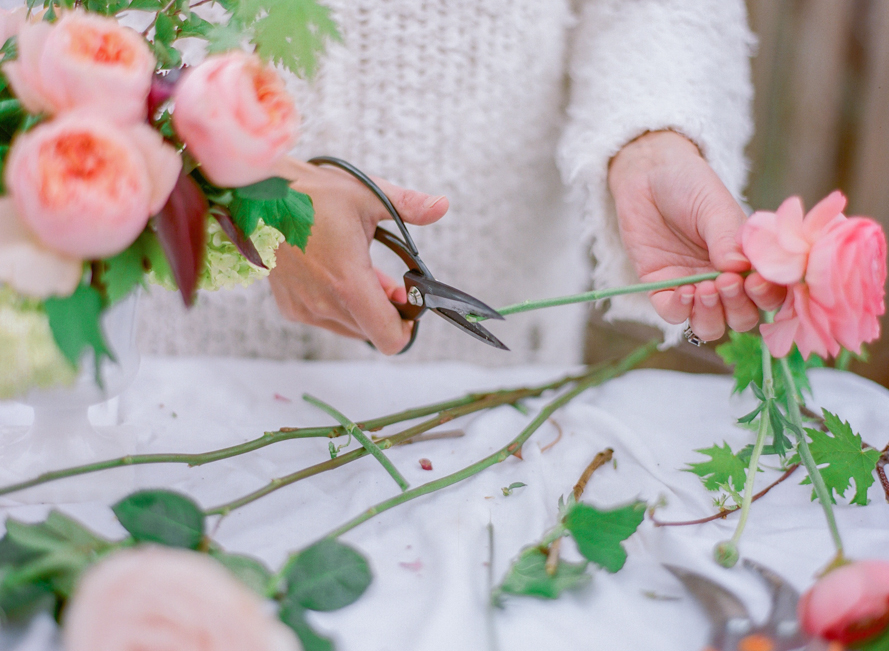
Step 2:
Next, prepare your container. Bend your chicken wire to fit snugly inside the container. The chicken wire acts as a grid to hold your flowers where you want them, giving your design the shape you want.
